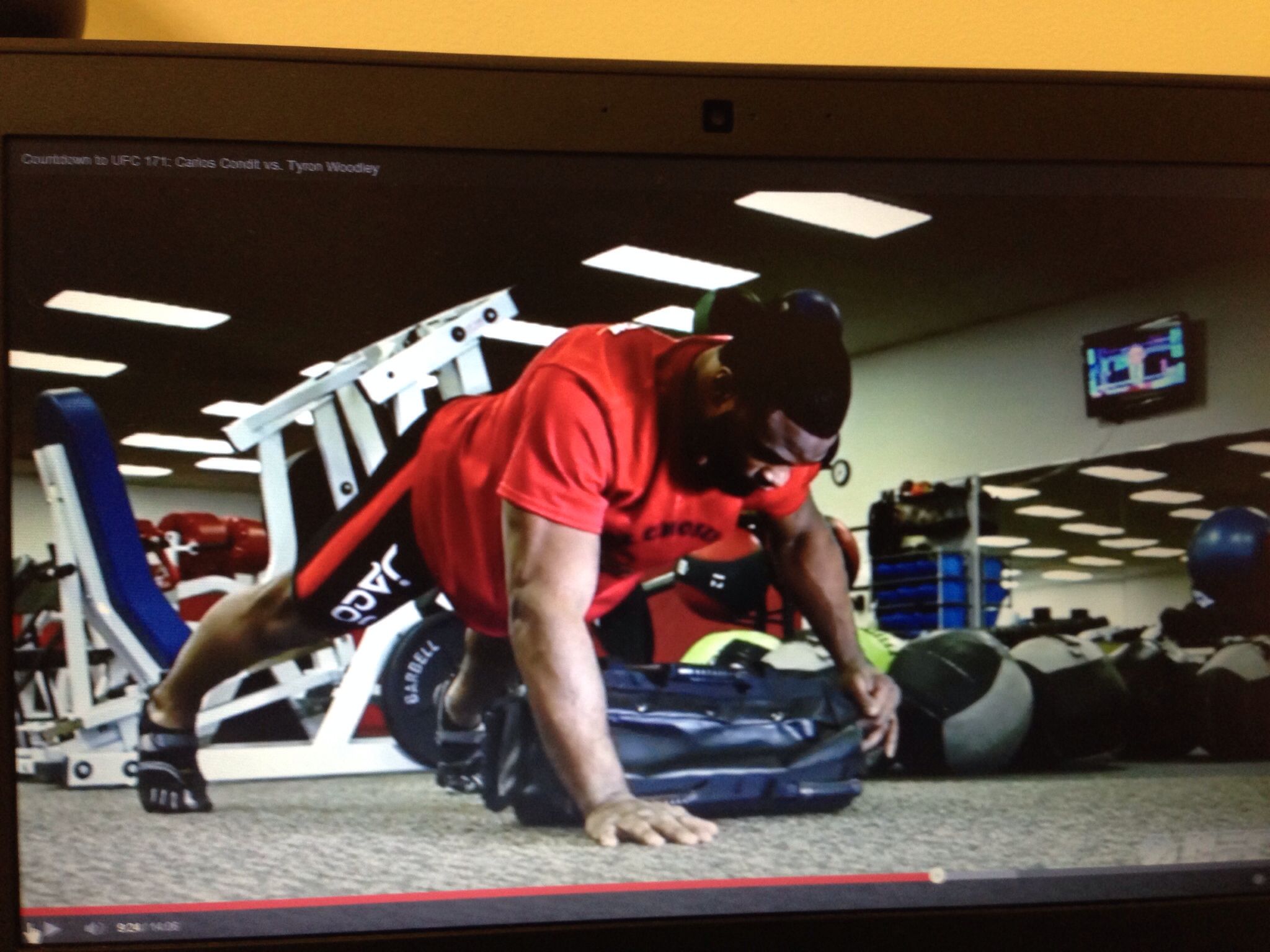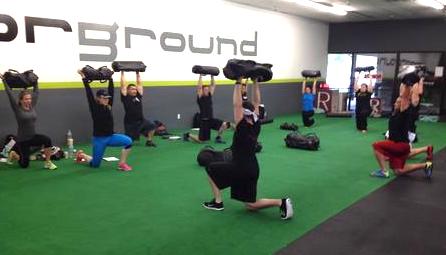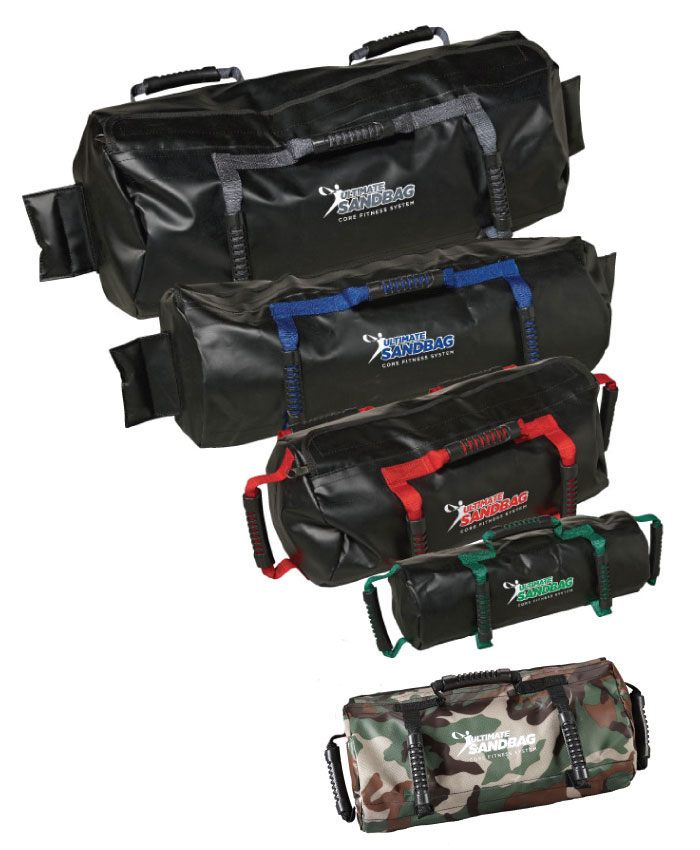Athletic Based Ultimate Sandbag Training
2020-06-30
Over the years we have been very fortunate to have lots of different high school, college, and professional sports teams use DVRT and Ultimate Sandbag Training. These are people with typically access to any piece of fitness and performance training tools they can imagine. That begs the question, why do athletes choose to work out with DVRT Ultimate Sandbag Training?
“Because it builds real world strength!” is a popular answer that’s difficult to dislike, but the response often leads me to ask the major question, “how?”
It’s why elite athletes like Julio Jones, Ray Lewis, Tyron Woodley and many more have trained with Ultimate Sandbags. It prepares them to use their bodies in actual sports situations, which are difficult to simulate with traditional training programs.

I have discussed many times how people make some very common errors in trying to use DVRT Ultimate Sandbag Training (an article probably worth sharing again soon!) and missed what make them so different. However, if people really did believe that they build “real world” strength, “sandbags” would be the foundation of strength programs for a long time. This simply hasn’t been the case.
People tend to believe that “sandbags” (I put it in parenthesis because we all know that not all sandbags are built or designed the same) build real world strength because the sandbag is an unstable implement, like something they would encounter in the real world. Not only is this statement untrue, it would cause many of us to consider barbells, dumbbells and kettlebells as not “functional,” because they are static weights without the instability that sandbags provide.
We know that these other tools have value, so what is it really about Ultimate Sandbag Training programs that make them so important and effective?

One of the most undervalued aspects of Ultimate Sandbag Training is that they can quickly build better movement. If we understand how to program, progress and fulfill the purpose of these drills, we can, within seconds, improve squatting, increase mobility, evaluate weaknesses and develop a plan that really lives up to the hype!
https://www.instagram.com/p/B2HFzwjndU9/
Helping elite athletes is great, but also seeing how we impact people that just want to live better is even cooler! Like this coach that wasn’t able to squat without a great deal of pain till DVRT Master, Cory Cripe helped her understand how to use her body smarter!
Lofty promises, right? I’m not saying it will be easy, but it will be worth it. We have to think of a system rather than an implement. After all, a barbell can be used for powerlifting, Olympic lifting and bodybuilding, each of which has its own specific (and deeply rooted) techniques and philosophies that create different outcomes.
When we are discussing Ultimate Sandbag Training, I want you to think in terms of the principles of our Dynamic Variable Resistance System (DVRT). Why? Because it will give us guidance and help solve many of the problems that have plagued sandbag workouts for years, keeping it from being the foundational tool it deserves to be.
Organizing Your DVRT Sandbag Workout
Beginning your DVRT sandbag workout doesn’t actually differ from any other. We have to think of your goal, your starting point, your strengths/weaknesses, etc. No matter what, though, we do begin by looking at how the body is meant to move. Thus, we begin to think in terms of movement patterns, the way the body functions in sports and every day life. An easy way to think about the body’s movement is to think of these patterns:
- Squat
- Hip Hinge
- Lunge
- Stepping
- Vertical Pull
- Vertical Push
- Horizontal Pull
- Horizontal Push
- Rotation
- Anti-Rotation
- Extension/Flexion of Trunk
- Anti-Extension/Flexion
Great training isn ‘t just for athletes and doesn’t have to be overly complicated.
Wow! That’s a lot of “stuff” to fit into your workouts. Don’t worry, you will be able to cover several of these patterns at once. For example, a Shoulder Squat is a Squat, but it is also anti-rotation; and a Clean and Press is a hip hinge, anti-extension/flexion of trunk and vertical pushing/pulling.
That’s why it’s important to select exercises that give us the biggest “bang for our buck” and minimize working the body in isolation. Also, you will not perform all these movements in each workout, but instead alternate them from workout to workout. The great thing is that this allows us a ton of variety, but more importantly purposeful progression within each section.
Typically, we select 4-6 exercises that cover as many of the patterns as possible. The more patterns an exercise covers, the fewer exercises we perform. That is why bodybuilder programs have so many exercises—because they address things individually rather than how the body naturally functions.
How Heavy Should I Go?
This might be the biggest question I receive during 10 years of teaching the DVRT Ultimate Sandbag Training program. It is a good and rather obvious one. After all, we typically think in terms of how much weight we are moving. Unfortunately, this is where things get slightly complicated.
Ultimate Sandbags have not only load but dimension. Therefore, we need to think not only how heavy, but how large a sandbag to use. That is one of the major issues creating the Ultimate Sandbag solved for programs: how do you standardize something that can be so variable?
There is also the issue that we are not going to change the weight all that much. Due to the time it would take from set to set, we will generally have some sandbags at standard loads, which are based on the experience of working with thousands of people from different backgrounds. Although you can alter these loads for yourself, I highly recommend starting with these recommendations.

Besides nice looking colors the changing dimensions give a different way of progressing your DVRT Ultimate Sandbag Training
You will notice that we use a stoplight system created by DVRT Master Chief Instructors Steve Di Tomaso and Kari Negraiff of Envision Fitness in Maple Ridge, BC. The goal of the stoplight system is to make what seems complex very easy. Instead of trying to get your sandbag to 52.5 pounds, you know if you are using a Yellow Strength sandbag, you are using a weight that is right for you.
Green typically refers to a lighter load for a beginner or more complex movement. Yellow, more intermediate, and Red, of course, more advanced.
| Color/ Size of Ultimate Sandbag | Core | Power | Strength | Burly |
| Green | 10 pounds | 20 pounds | 40 pounds | 80 pounds |
| Yellow | 15 pounds | 30 pounds | 50 pounds | 100 pounds |
| Red | 20 pounds | 40 pounds | 60 pounds | 120 pounds |
I understand this is more complicated than aiming for that 225-pound Bench Press or 405-pound Deadlift. However, it really isn’t complex, just new to most athletes. Once you become familiar with the concepts, you will pull a Homer Simpson “doh!” and see how singularly focused your training has become. DVRT is a more holistic view of building strength. Getting used to it takes time, but can be well worth it.
Putting the Puzzle Together
Training variables such as exercises, loads, sandbag dimension, reps, rest intervals, etc. are all pieces of the puzzle. The sandbag workout is the puzzle thoughtfully put together. Just like a puzzle, if you put the right pieces together, you get something really special. On the other hand, trying to jam misshaped pieces into a puzzle gets you a giant mess.
Let’s go over how we can construct some sandbag workouts and then build layers to them for more advanced programming.
Workout A
| Exercise | Size | Weight | Sets | Reps | Rest Interval |
| A1. Shoulder Lunge | M: StrengthW: Power | M:Yellow (50#)W:Yellow (30#) | 3-4 | 6-8 per side | 45 seconds |
| A2. Clean and Press | M: BurlyW: Strength | M: Green (80#)W:Yellow (50#) | 3-4 | 4-6 | 45 seconds |
| B1. Bear Hug Squat | M: BurlyW: Strength | M:Green (80#)W:Yellow (50#) | 2-3 | 10-12 | 30 seconds |
| B2. Lateral Drag | M: PowerW: Power | M:Yellow (30#)W:Green (20#) | 2-3 | 4-6 per side | 30 seconds |
| B3. Around the World | M: PowerW: Power | M:Yellow (30#)W:Green (20#) | 2-3 | 12-15 per side | 30 seconds |
Workout B
| Exercise | Size | Weight | Sets | Reps | Rest Interval |
| A1. Front Loaded Rear Step Good Mornings | M: StrengthW: Power | M: Yellow (50 #)W:Yellow (30#) | 3-4 | 5-6 per side | 45 seconds |
| A2. Chin-Ups | Body weight or added load | 3-4 | 4-6 | 45 seconds | |
| B1. Shoulder Staggered Squats | M: BurlyW: Strength | M: Green (80#)W:Yellow (50#) | 2-3 | 5-6 per side | 30 seconds |
| B2. Shoveling | M: PowerW: Power | M: Yellow (30#)W: Green (20 #) | 2-3 | 10-12 per side | 30 seconds |
| B3. Half Kneeling Arc Press | M: StrengthW: Power | M:Yellow (50 #)W:Green (20#) | 2-3 | 6-8 per side | 30 seconds |
Workout C
| Exercise | Size | Weight | Sets | Reps | Rest Interval |
| A1. Rotational Cleans | M: BurlyW: Strength | M: Green (80#)W:Yellow (50#) | 3-4 | 5-6 per side | 45 seconds |
| A2. Front Loaded Fists Squat to Press | M: BurlyW: Strength | M:Green (80#)W:Yellow (50#) | 3-4 | 10-12 | 45 seconds |
| B1. Rotational Lunge | M: PowerW: Power | M: Red (40#)W:Green (20#) | 2-3 | 8-10 | 30 seconds |
| B2. Kneeling Press Outs | M: PowerW: Power | M: Yellow (30#)W: Green(20#) | 2-3 | 5-8 | 30 seconds |
| B3. Grip Curls | M: PowerW: Power | M: Red (40#)W:Green (20 #) | 2-3 | 10-12 | 30 seconds |
Coach Lina Midla shows us how we can use these concepts into very practical DVRT workout programs.
Reading the DVRT Ultimate Sandbag Workout Program
This program is meant to be done three days a week to introduce you to the movements and the unique loading of the Ultimate Sandbag. As with most new programs, doing more is not always better. Become proficient in your technique first. Because instability will require some learning, getting better is a big thing.
You can use a Monday-Wednesday-Friday schedule, or any three-day schedule that works for you. However, I recommend you don’t perform it on back-to-back days. Since we have alternated priority in movement patterns in the workouts, it would not be the end of the world if this happens, but allowing for recovery is always a good idea.
The letters and numbers by each exercise refer to the order and grouping of exercises. Exercises marked “A” are to be done together. The numbers refer to the order of the movements. To make it easier at first, the workouts are organized so the first series is a superset, the second series a triset. This means you will perform the A1 exercise, rest the recommended amount, then perform A2. You will alternate these until the total number of sets are completed, then move to the “B” series.
Sets and repetitions offer ranges. This gives you another factor besides load to measure progress. If you can perform all the sets and highest number of repetitions, you can go to the next light in the Ultimate Sandbag series (e.g., green to yellow, etc.) or move to another size.
The workouts have been created not only to hit all of the movement patterns and demonstrate the relatively simplicity of DVRT sandbag workouts, but also to expose you to some of the unique variations and loading on the body that these types of workouts offer.
Please use the videos of each workout as a reference. The workouts will be new to many. But I am very confident that as you get to perform these sandbag workouts, you will love the benefits and get a lot of enjoyment from learning how diverse but purposeful your movement can be in training.
After you complete 4-6 weeks of these workouts we you will be ready to enter the next phase of DVRT Ultimate Sandbag Training. Check out how real athletes and strength coaches are using DVRT for their training and don’t miss saving 25% ALL throughout our DVRT site with code “save25” HERE
https://www.instagram.com/p/B-1qtOnHeXk/
© 2025 Ultimate Sandbag Training. Site by Jennifer Web Design.






